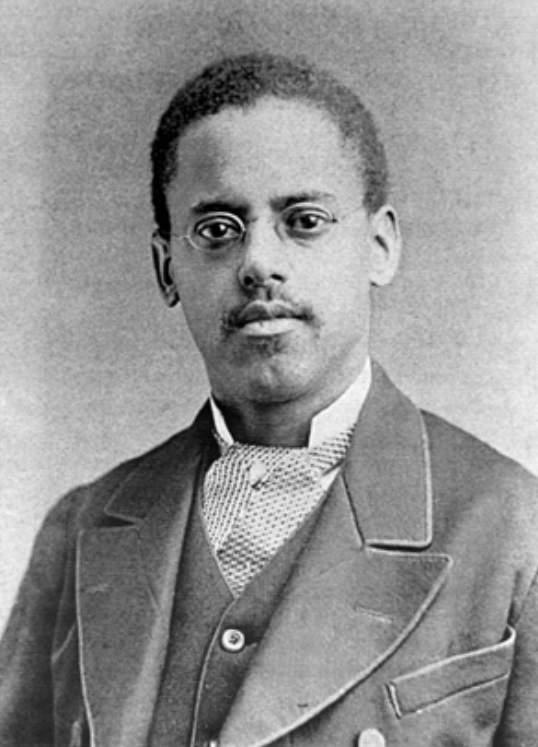
Lewis Howard Latimer (September 4, 1848 – December 11, 1928) was an American inventor and patent draftsman for the lightbulb and telephone.
Why It’s Important: Latimer is one of the greatest inventors of all time. Thomas Edison may have invented the electric light bulb, but Latimer helped make it a common feature in American households. In 1881 he received a patent for inventing a method of producing carbon filaments, which made the bulbs longer-lasting, more efficient and cheaper.
In 1876, he worked with Alexander Graham Bell to draft the drawings required for the patent of Bell’s telephone.
Lewis Howard Latimer was born in Chelsea, Massachusetts, on September 4, 1848, the youngest of four children of Rebecca Latimer (1823 – August 13, 1910) and George Latimer (July 4, 1818 – May 29, 1897). George Latimer had been the slave of James B. Gray of Virginia. George Latimer ran away to freedom to Boston, Massachusetts, on October 1842, along with his wife Rebecca, who had been the slave of another man.
In 1874, he co-patented (with Charles W. Brown) an improved toilet system for railroad cars called the Water Closet for Railroad Cars (U.S. Patent 147,363).
In 1876, Alexander Graham Bell employed Latimer, then a drafting technician at Bell’s patent law firm, to draft the necessary drawings required to receive a patent for Bell’s telephone.
In 1879, he moved to Bridgeport, Connecticut, with his brother William, his mother Rebecca, and his wife, Mary. Other family members, his brother George A. Latimer and his wife Jane, and his sister Margaret and her husband Augustus T. Hawley and their children, were already living there. Lewis was hired as assistant manager and draftsman for the U.S. Electric Lighting Company, a company owned by Hiram Maxim, a rival of Thomas A. Edison.
In 1881, Latimer, along with Joseph Nichols, invented a light bulb with a carbon filament, an improvement on Thomas Edison’s original paper filament, which would burn out quickly, and sold the patent to the United States Electric Company in 1881. He received a second patent on January 17th 1882 for the “Process of Manufacturing Carbons”, an improved method for the production of lightbulb carbon filaments.
The Edison Electric Light Company in New York City hired Latimer in 1884, as a draftsman and an expert witness in patent litigation on electric lights. While at Edison, Latimer wrote the first book on electric lighting, Incandescent Electric Lighting (1890) and supervised the installation of public electric lights throughout New York, Philadelphia, Montreal, and London. When that company was combined in 1892 with the Thomson-Houston Electric Company to form General Electric, he continued to work in the legal department.
